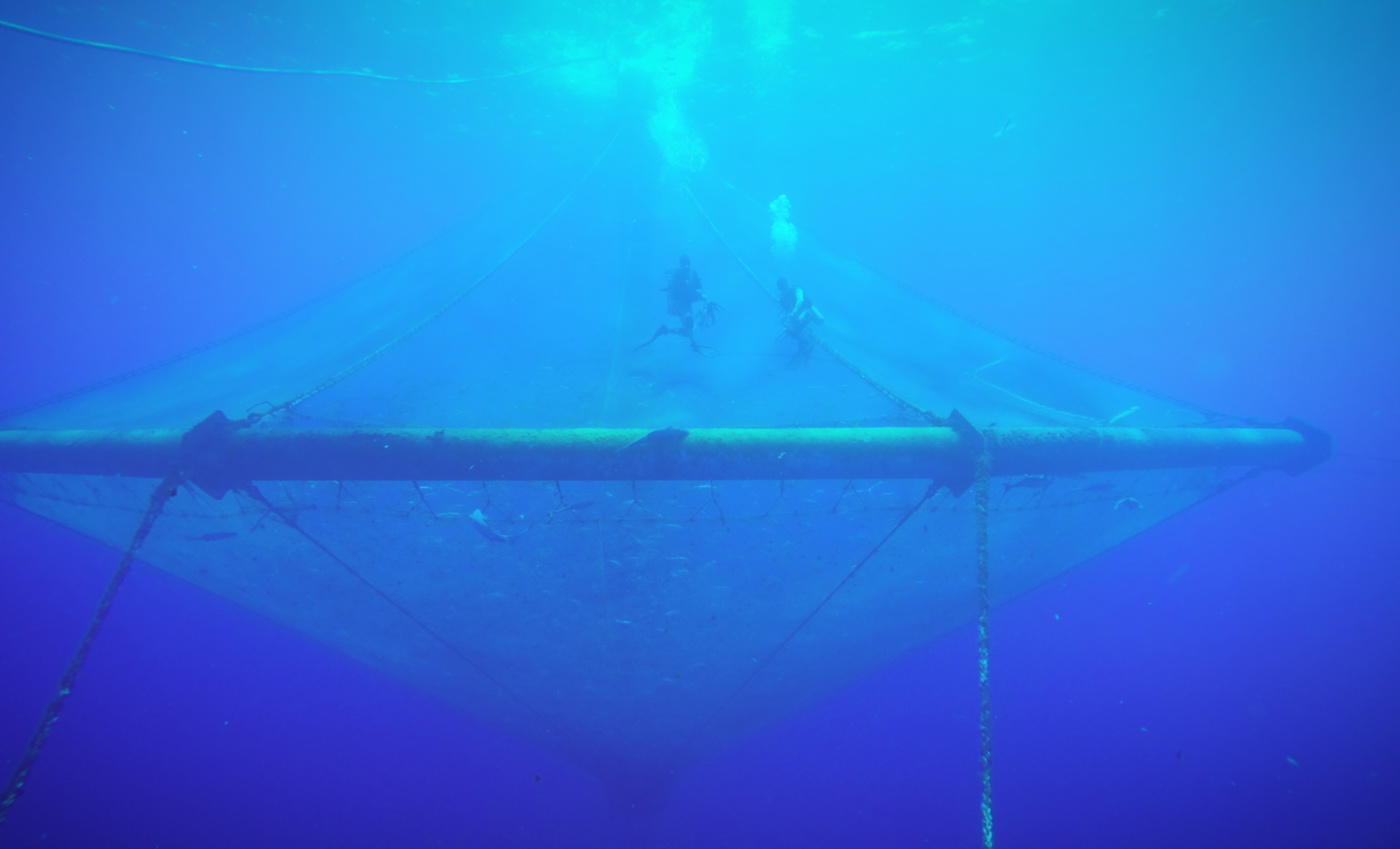
The 7 Advantages of Fully Submersible Net Pens
Open ocean fish farming is considered by many to be the future of aquaculture because it offers many benefits: ideal water conditions, a more natural environment for fish and fewer threats like sea lice and algal blooms.
But the conditions found miles from shore present challenges as well, most of them involving the destructive power of the ocean, which can slowly damage typical surface pens through waves and currents or destroy them overnight with a violent storm.
The good news is that most of those challenges can be eliminated or minimized by submerging pens and their associated infrastructure.
This is something Innovasea has been doing for almost three decades, but lately other companies have begun to jump on the submersibility bandwagon. Some have tried to put a fresh spin on it, coming up with names like “deep farming” to make it sound new. Unfortunately, what they’re offering isn’t full submersibility. Their pens and mooring systems are still tethered to buoys floating at the surface.
That means that when heavy waves and strong currents are knocking around the buoys at the surface, that same energy is being transferred down to the pen, no matter how far below the surface it is. That’s a risky proposition for any fish farm, but especially one located in the open ocean.
The Importance of Full Submersibility
Innovasea is the only company that delivers full submersibility via a fully submerged mooring system that keeps everything below the surface – and away from the pounding wave energy. When our SeaStation, SeaVolution and SeaProtean pens are submerged, it means that everything is underwater and safe from whatever is happening at the surface.
Why is this important? Let’s dig into the science a bit.
Wave energy is most powerful at the surface, and in deep water it decreases significantly as you go down into the water column. The rule of thumb is that if you take the length of the wave [distance from crest to crest] and then go half that distance beneath the surface, you will have reduced the energy of that wave by about 90 percent. So, if the wave crests are 30 meters apart, going down 15 meters will eliminate most of that wave energy.
In addition, currents are typically driven by surface wind in open ocean environments. The further you get away from the wind at the surface, the less ability it has to move the water. That means getting down five or 10 meters below the surface will bring you to water that isn’t moving much.
So the ability to have all your infrastructure far below the surface, as with Innovasea’s submerged grid systems, goes a long way to avoiding the incessant daily pounding of the ocean and the risks that come with it.
But Wait: There’s More
Full submersibility brings a number of other benefits as well, whether the farm is far out in the open ocean or tucked safely in a harbor close to shore. When you’re able to get all of your infrastructure below the surface, you can:
- Enhance site aesthetics – A truly submersible pen system like Innovasea’s leaves little to see at the surface. This helps placate stakeholders, improve site security and eliminate vandalism or theft.
- Safeguard fish – Algal blooms and parasites like sea lice appear almost exclusively near the surface. Submersible pens allow you to choose the right depth for your fish to minimize the danger from such threats.
- Improve fish health – Different species prefer different depths and water temperatures. With submersible pens you can lock into the right thermocline for your fish to maximize growth rates and reduce mortalities.
- Evade storms – Pens tethered to floating buoys are going to be subject to storm forces unleashed at the surface, which can lead to pen damage, fish escapes or even the pen becoming unmoored and floating away. Innovasea’s SeaStations have survived numerous hurricanes, typhoons and storm surges, including a direct hit by Category 4 Hurricane Frances in the Bahamas in 2004.
- Minimize biofouling – Sunlight attenuates in water, so the further you go beneath the surface, the harder it is for organisms to grow. That means less biofouling on netting and infrastructure and thus better water flow and oxygenation for the fish.
- Make it easier to get around the farm site – Having all of a farm’s infrastructure below the surface – mooring lines, buoys, feeding pipes – makes it easier for operators to maneuver around the site.
As you can see, being able to lower a fish pen below the surface is vital to operating in more dynamic ocean environments. But only Innovasea offers the additional benefits that come with full submersibility, where the entire farm infrastructure is located below the surface and out of harm’s way.
Corey Sullivan is an ocean engineer and project coordinator at Innovasea and is based out of the Boston office. Prior to joining Innovasea in 2019, Corey was a research engineer at the University of New Hampshire, where he performed engineering design for finfish, shellfish and macroalgae operations as well as renewable ocean technology. He holds a bachelor’s degree in mechanical engineering and a master’s degree in ocean engineering, both from the University of New Hampshire.

Ready to take the plunge?
Contact Innovasea today to find out how our aquaculture and fish tracking experts can help with your next project.
